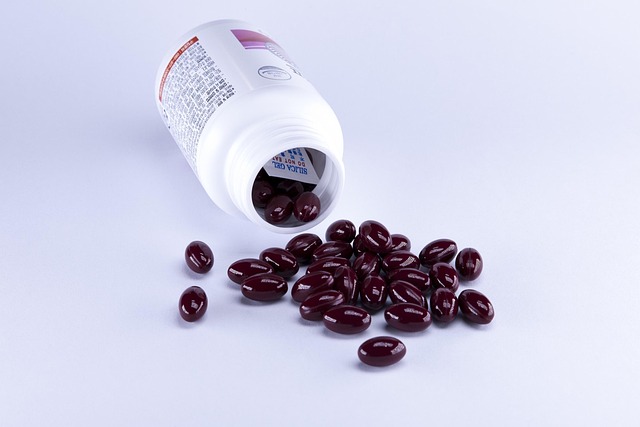Termites cause significant structural damage if left unchecked, leading to costly repairs. Early detection through regular inspections is key. While affordable treatments like baits and traps exist, severe infestations may require extensive work. Effective, eco-friendly options include organic repellents, beneficial insects, and natural barriers, offering long-term prevention at lower costs than traditional chemical methods. Safety precautions are crucial for chemical treatments, recommended to be professionally applied. DIY methods can be affordable but may not be as effective as professional services. Long-term prevention strategies like regular inspections and landscaping significantly reduce termite risk. Integrating barrier treatments, baiting systems, and targeted termiticides proves successful in reducing infestations at lower costs. The ideal treatment balances effectiveness, budget, and eco-friendliness based on your home's unique needs.
Looking to protect your home from termite damage? Understanding effective yet safe termite treatments is crucial. This comprehensive guide delves into various methods, from chemical solutions with safety precautions to natural, eco-friendly alternatives. Learn about DIY vs professional management and long-term prevention strategies. Discover successful case studies and choose the best affordable termite treatment for your property, ensuring a pest-free environment without compromising safety.
Understanding Termite Damage and Its Costs

Termites are silent invaders that can cause significant damage to your property if left undetected. Understanding the extent of termite damage is crucial when considering appropriate treatment options. These insects feed on cellulose, which is a major component in wood and paper products, making homes an attractive target. Over time, their colony’s relentless feeding can lead to structural instability and severe financial losses.
The cost of termite damage repair can vary widely depending on several factors, including the extent of infestation, the type of property, and local labor rates. Early detection through regular inspections is key to mitigating these costs. Affordable termite treatment options are available, such as preventive measures like baits and traps, which can be more economical than traditional chemical treatments. However, severe cases may require extensive repairs, underlining the importance of addressing termite issues promptly to avoid substantial financial burdens.
Common Termite Treatment Methods

In the battle against termites, several treatment methods have emerged as effective tools for homeowners seeking affordable termite control. Traditional approaches include chemical treatments, where professionals apply pesticides to infested areas, targeting the insect’s nervous system. This method is often considered a quick fix and can be cost-effective for minor infestations.
Beyond chemical treatments, there are organic and non-chemical options gaining popularity as affordable termite treatment solutions. These methods focus on natural barriers and deterrents, such as using specific plants known to repel termites or applying natural oils that disrupt their communication systems. While these alternatives might require more time and effort, they offer a greener, long-lasting approach to managing termite problems, appealing to environmentally conscious homeowners.
Advantages of Affordable Termite Control

Many homeowners often associate termite control with significant costs, but there is a growing trend towards more affordable termite treatments that offer multiple advantages. One of the key benefits is long-term prevention, as these cost-effective methods can protect homes for years to come, saving money in the long run by eliminating the need for frequent, costly inspections and treatments.
Additionally, affordable termite control options are eco-friendly and less hazardous to human health and the environment compared to traditional chemical-heavy treatments. Using baits and biological agents reduces exposure to harmful substances, making it a safer choice for families, pets, and local ecosystems. This approach also helps preserve non-target organisms and promotes biodiversity by targeting specific species without disrupting the ecological balance.
Natural and Eco-Friendly Solutions

Many homeowners are increasingly seeking affordable termite treatments that also align with their eco-conscious values. Fortunately, there are several natural and eco-friendly solutions available today that effectively target termites without relying on potentially harmful chemicals. These methods often involve using beneficial insects, such as nematodes or microbes, to attack and eliminate termite colonies. Other organic approaches include applying essential oils known for their insecticidal properties directly to affected areas, or utilizing natural barriers like diatomaceous earth, which disrupts the moisture and protective cuticle of termites.
By opting for these affordable termite treatments, homeowners can protect their properties from destructive termite infestations while minimizing environmental impact. These methods not only promote a healthier ecosystem but also offer long-lasting protection, making them a smart choice for those looking to keep their homes safe and sustainable.
Chemical Treatments: Safety Precautions

Chemical treatments are a common and often effective method for termite control, but they come with safety precautions that should never be overlooked. When considering affordable termite treatment options, it’s crucial to understand that many chemicals used can be hazardous if not handled properly. This includes potential risks to both human health and the environment. Therefore, professional application is recommended to ensure safety and effectiveness.
For homeowners opting for chemical treatments, wearing protective gear such as gloves, masks, and goggles is essential. Additionally, ensuring proper ventilation during and after treatment is vital to minimize exposure to harmful fumes. It’s also important to follow all instructions provided by the manufacturer or a certified professional to avoid accidents and health issues. These simple precautions can go a long way in making chemical termite treatments safer and more affordable for everyone.
Professional vs DIY Termite Management

When it comes to managing termite infestations, there are two primary approaches: professional termite management and DIY (do-it-yourself) treatments. While DIY methods can be an affordable termite treatment option, they may not offer the same level of effectiveness as professional services. Termites are intricate pests with complex behavior, requiring specialized knowledge and equipment for successful eradication.
Professional termite management provides several advantages. Experts use advanced techniques and eco-friendly products tailored to specific needs, ensuring a more comprehensive and long-lasting solution. They also offer ongoing monitoring and maintenance, preventing future infestations. Affordability shouldn’t be the sole factor when considering termite control; seeking professional help can save time, money, and potential property damage in the long run.
Long-term Prevention Strategies

Implementing long-term prevention strategies is a smart move for anyone looking to safeguard their property from termite infestations. One effective approach is regular inspections, especially in areas prone to moisture buildup, as termites are attracted to such environments. By catching any signs of an invasion early on, you can opt for more affordable termite treatments and prevent extensive damage.
Additionally, creating physical barriers like treating wooden structures with repellents or using termite-resistant materials during construction can significantly reduce the risk. Landscaping is another key aspect; keeping trees and shrubs away from your home’s foundation creates a buffer zone, making it harder for termites to access your property, thus leading to less need for expensive termite control services.
Case Studies: Successful Termite Mitigation

Successful termite mitigation is not just about eliminating the current infestation; it’s also about preventing future ones. Many case studies highlight the effectiveness of affordable termite treatments that combine multiple strategies, such as barrier treatments, baiting systems, and targeted applications of termiticides. For instance, in suburban areas known for heavy termite activity, property owners have seen significant success by integrating annual inspections with proactive treatment plans. These comprehensive approaches not only save on costs but also ensure the long-term health of structures.
One notable case involves a historical home in a coastal city that was plagued by persistent termite infestations. Through a collaborative effort between pest control experts and the property owner, an affordable, eco-friendly treatment plan was implemented. This involved installing a physical barrier around the perimeter, implementing a monitored baiting system, and using targeted micro-applications of termiticides in affected areas. Within six months, the termites were significantly reduced, and within a year, the infestation was almost entirely eradicated, showcasing the power of integrated pest management strategies for affordable termite treatment.
Choosing the Right Treatment for Your Home

When considering termite treatment, it’s crucial to understand that one-size-fits-all solutions rarely work effectively. The right approach depends on various factors unique to your home and the extent of the infestation. Termite control experts offer a range of affordable treatments, from non-toxic options to more conventional methods. Each has its pros and cons, so it’s essential to consult professionals who can assess your situation accurately.
For instance, affordable termite treatments may include baiting systems that use attractants to lure termites away from your home or locally applied solutions targeted at specific areas prone to infestations. These methods are environmentally friendly but might require more frequent applications. Conversely, traditional treatments like soil treatment or fumigation offer faster results but can be costlier and involve stronger chemicals. Choosing the right treatment means balancing effectiveness, budget, and environmental impact to ensure your home is protected effectively against these persistent pests.
